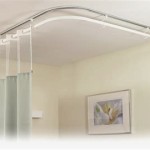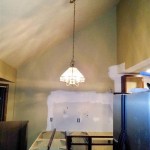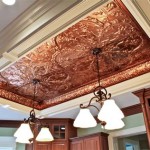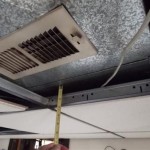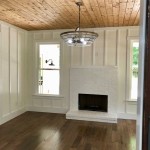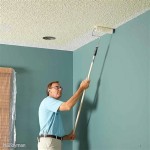False Ceiling Design Meaning: An Exploration of Functionality and Aesthetics
False ceiling design encompasses the deliberate modification of a room's ceiling to create a secondary, lower surface. This suspended ceiling, also known as a dropped ceiling or a suspended ceiling, hangs below the structural ceiling, creating a plenum – a void that can house wiring, ductwork, and other utilities. Beyond its functional aspects, false ceiling design plays a crucial role in shaping the aesthetic character of a space, influencing lighting, acoustics, and overall visual appeal. Understanding the nuances of false ceiling design requires a comprehensive grasp of its various components, materials, installation techniques, and the principles guiding its implementation.
The origins of false ceilings can be traced back centuries, with early examples found in Japanese architecture. However, the modern iterations of false ceilings, as they are commonly known today, emerged in the 20th century, primarily driven by the need to conceal building services and improve acoustic performance in commercial spaces. Over time, the application of false ceilings has expanded to residential environments, evolving from purely functional solutions to decorative elements that enhance the interior design scheme.
A false ceiling typically comprises a grid or framework suspended from the existing structural ceiling using wires or metal hangers. This framework supports panels or tiles, which constitute the visible surface of the false ceiling. Various materials are employed in the construction of false ceilings, each offering distinct properties in terms of cost, durability, acoustic performance, fire resistance, and aesthetic appeal. Common materials include gypsum board, mineral fiber, metal, PVC, wood, and fabric.
The design of a false ceiling must consider factors such as the room's size, shape, and intended use. It also necessitates an understanding of the existing lighting scheme, ventilation system, and any other architectural features that may influence the overall design. Furthermore, adherence to building codes and safety regulations is paramount, particularly concerning fire resistance and load-bearing capacity.
Key Point 1: Functional Benefits of False Ceiling Designs
One of the primary motivations for installing a false ceiling is its ability to conceal unsightly wiring, ductwork, and plumbing that run beneath the structural ceiling. This not only improves the aesthetic appearance of the room but also simplifies maintenance access to these utilities. The plenum created by the false ceiling provides a convenient space for running cables and pipes, allowing for easy modifications or repairs without disrupting the finished ceiling surface.
Beyond concealment, false ceilings contribute significantly to improved thermal insulation. The air gap between the structural ceiling and the false ceiling acts as an insulator, reducing heat transfer and helping to maintain a more consistent temperature within the room. This can lead to reduced energy consumption for heating and cooling, resulting in lower utility bills and a more comfortable living environment. The degree of insulation can be further enhanced by incorporating insulation materials within the plenum space.
Acoustic performance is another key benefit of false ceiling design. Many types of false ceiling panels are designed with sound-absorbing properties, helping to reduce reverberation and noise levels within a room. This is particularly important in spaces where speech intelligibility is critical, such as offices, classrooms, and conference rooms. The choice of materials and the design of the panel surface can significantly impact the acoustic performance of the false ceiling.
Finally, false ceilings can contribute to improved fire safety, especially when constructed from fire-resistant materials. Some false ceiling systems are designed to delay the spread of fire, providing occupants with additional time to evacuate the building and allowing firefighters to respond more effectively. Building codes often specify the required fire resistance rating for false ceilings, depending on the type of occupancy and the size of the building.
Key Point 2: Aesthetic Considerations in False Ceiling Design
While functionality is paramount, the aesthetic aspects of false ceiling design are equally important. A well-designed false ceiling can transform the appearance of a space, adding visual interest, creating a sense of depth, and enhancing the overall ambiance. The choice of materials, colors, textures, and lighting plays a crucial role in achieving the desired aesthetic effect.
Different types of false ceilings offer varying aesthetic possibilities. Suspended grid ceilings, with their modular design, provide a clean and uniform look that is suitable for commercial spaces. Gypsum board false ceilings, on the other hand, offer greater flexibility in terms of design, allowing for curved surfaces, recessed lighting, and other custom features. Coffered ceilings, with their series of recessed panels, can add a touch of elegance and sophistication to a room.
Lighting integration is a critical aspect of false ceiling design. Recessed lighting fixtures, such as spotlights, downlights, and LED strip lights, can be seamlessly integrated into the false ceiling, providing ambient, task, or accent lighting. The placement and type of lighting fixtures should be carefully considered to achieve the desired level of illumination and to highlight specific features of the room. Indirect lighting, which bounces light off the ceiling, can create a soft and diffused illumination that minimizes glare and shadows.
The color and texture of the false ceiling panels can also significantly impact the overall aesthetic. Lighter colors tend to make a room feel larger and more open, while darker colors can create a more intimate and cozy atmosphere. Textured panels can add visual interest and depth to the ceiling, while smooth panels offer a more contemporary and minimalist look. The choice of color and texture should complement the overall design scheme of the room.
Key Point 3: Material Selection and Installation Considerations
The selection of appropriate materials is a crucial step in the false ceiling design process. Each material offers distinct advantages and disadvantages in terms of cost, durability, acoustic performance, fire resistance, and aesthetic appeal. Gypsum board is a popular choice for its versatility and cost-effectiveness, while mineral fiber is often preferred for its superior acoustic properties. Metal ceilings offer durability and a modern aesthetic, while wood ceilings can add warmth and character to a space. PVC ceilings are lightweight and moisture-resistant, making them suitable for bathrooms and kitchens.
Installation of a false ceiling requires careful planning and execution. The first step is to accurately measure the room and determine the optimal height for the false ceiling. The suspension system, consisting of wires or metal hangers, must be securely attached to the structural ceiling. The grid or framework is then assembled and leveled to ensure a uniform and even surface. Finally, the panels or tiles are installed into the grid, ensuring a snug and secure fit.
Proper ventilation is an important consideration when installing a false ceiling. The plenum space should be adequately ventilated to prevent the build-up of moisture and to ensure proper air circulation. Ventilation grilles can be integrated into the false ceiling to allow for air exchange between the room and the plenum. In some cases, it may be necessary to install a dedicated ventilation system to ensure adequate air flow.
Maintenance of a false ceiling is relatively simple. Regular cleaning with a soft cloth or vacuum cleaner is usually sufficient to remove dust and debris. Stains can be removed with a mild detergent and water. Damaged panels or tiles can be easily replaced, provided that spare materials are available. It is important to inspect the suspension system periodically to ensure that it remains secure and that there are no signs of corrosion or damage.

False Ceiling Definition Benefits And Various Types Happho

Gypsum False Ceiling Vs Pop Designcafe

What Is False Ceiling Contractorbhai

Difference Between True Ceiling False Best Builders In Chennai L Live Homes

False Ceiling Guide Benefits Types Costs Explained

False Ceiling Definition Benefits And Various Types Happho

8 Types Of False Ceilings Commonly Used For Home Ultratech Cement

False Ceiling In Home Building Basics By Ultratech

Peripheral False Ceiling Designs In Rtf Rethinking The Future

False Ceiling Designs Vm Singapore Partition Wall Contractor
Related Posts

